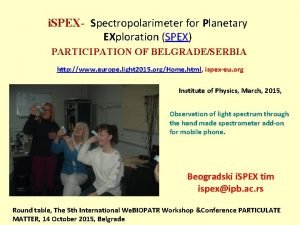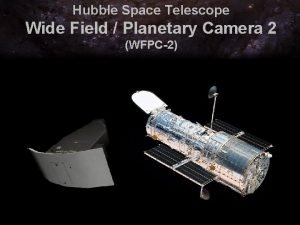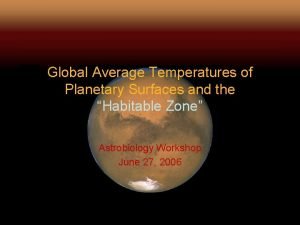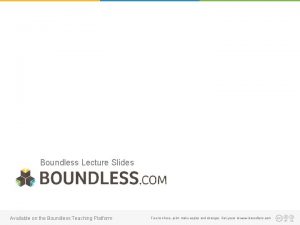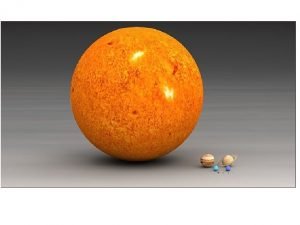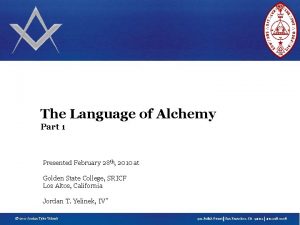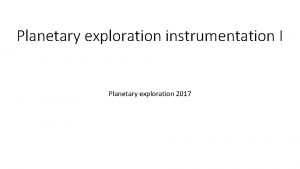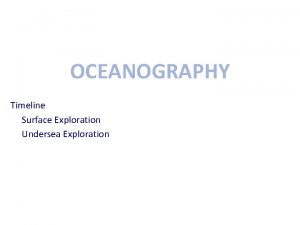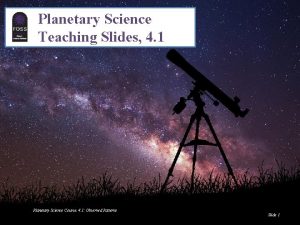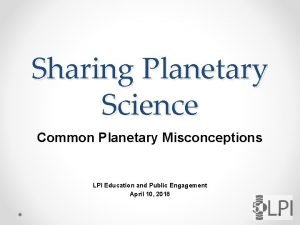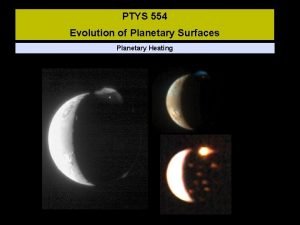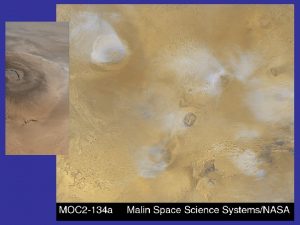i SPEX Spectropolarimeter for Planetary EXploration SPEX PARTICIPATION
















- Slides: 16

i. SPEX- Spectropolarimeter for Planetary EXploration (SPEX) PARTICIPATION OF BELGRADE/SERBIA http: //www. europe. light 2015. org/Home. html, ispex-eu. org Institute of Physics, March, 2015, Observation of light spectrum through the hand made spectrometer add-on for mobile phone. Beogradski i. SPEX tim ispex@ipb. ac. rs Round table, The 5 th International We. BIOPATR Workshop &Conference PARTICULATE MATTER, 14 October 2015, Belgrade

Citizens from Holland measure optical properties of light using ispex adds on. ispex-eu. org

The i. SPEX team, led by Frans Snik of Leiden University, analyzed all measurements from three days in 2013 and combined them into unique maps of dust particles above the Netherlands. The results match and sometimes even exceed those of groundbased measurement networks and satellite instruments.

Do. LP - Degree of linear polarization AOT -Aerosol optical thickness The i. SPEX maps achieve a spatial resolution as small as 2 kilometers whereas satellite data are much courser. They also fill in blind spots of established ground-based atmospheric measurement networks. The scientific article that presents these first results of the i. SPEX project was published in Geophysical Research Letters on 27 October 2014.

After a rigorous quality assessment of each submitted data point, measurements recorded in specific areas within a limited amount of time are averaged to obtain sufficient accuracy. Subsequently the data are converted to Aerosol Optical Thickness (AOT), which is a standardized quantity related to the total amount of atmospheric particles. The i. SPEX AOT data match comparable data from satellites and the AERONET ground station at Cabauw, the Netherlands. In areas with sufficiently high measurement densities, the i. SPEX maps can even discern smaller details than satellite data.

Join i. SPEX-EU and Measure Air Pollution with your Smartphone i. SPEX - Ja učestvujem u planetarnom istraživanju pomoću spektropolarimetra na pametnom telefonu belgrade@ispex-eu. org ispex@ipb. ac. rs LIGHT 2015 is a high impact outreach and education project to promote the importance of photonics to young people, entrepreneurs and the general public in Europe during the International Year of Light and Light-based Technologies 2015. You can play a vital part in helping scientists to better understand the impact that air pollution has on the environment and our health. With the i. SPEX add-on and app, you can transform your smartphone into a scientific tool to measure tiny particles in the atmosphere that contribute to air pollution and its impacts in an asyet poorly understood way.

Spectropolarimeter for Planetary EXploration (SPEX) i. PHONE 4, 4 S, 5, 5 S

i. SPEX modulated spectrum of partically polarized blue sky (top) and unpolarized clouds (bottom) Modulisan spektar svetlosti ybog prisustva aerosola u vazduhu (gore) I spektar nepolarizovane svetlosti (bez prisustva aerosola) – (dole).

Spektar nepolariz ovane svetlosti Spektar polarizovane svetlosti

SPEX OPTICAL DESIGN OPTIČKA ŠEMA UREĐAJA SPEX Quarter wave plate, multi order wave plate, polarizer, spectrograph Lamda/4 pločica, talasna pločica višeg reda, polarizator, spektrograf

Conceptual drawing of the SPEX optical design. Of the incident horizontally polarized beam (indicated by the arrows), only certain colors keep this horizontal polarization, while the polarization angle of other colors is transformed by the multi order waveplate into vertical polarization. Only vertically polarized colors are transmitted by the polarizer.



Measurements in Belgrade, 23 September 2015. Students doing measurements in the Primary School Djordje Krstić, Belgrade

Students in the Medical school, Šabac after thez received ispex adds-on Measurements in Šabac, 23 september 2015.

Belgrade i. SPEX team 1. Mirjana Božić, Institute of Physics, Univerisity of Belgrade, team leader 2. Ilija Savić, Physics Faculty, University of Belgrade 3. Nenad Vukmirović, Institute of Physics, Univerisity of Belgrade 4. Darko Vasiljević, Institute of Physics, Univerisity of Belgrade 5. Zoran Mijić, Institute of Physics, Univerisity of Belgrade 6. Milena Davidović, Faculty of Civil Engineering, University of Belgrade 7. Jovica Milisavljević, Mathematical Grammar School 8. Biljana Stojičić, Zemun Grammar School 9. Goran Stojićević, Center for advanced training, Šabac 10. Milenija Joksimović, Chemical Nutritional Technological School, Belgrade 11. Ljiljana Ivančević, Primary School Djordje Krstić, Belgrade 12. Marijana Jović Lučić, Primary School Djordje Krstić, Belgrade 13. Tatjana Marković Topalović, Medical School dr Andra Jovanović, Šabac 14. Jovana Mišić, Primary School United Nations, Belgrade 15. Jelena Živanović, Zemun Grammar School 16. Sanja Bulat, Primary School Branislav Nušić, Belgrade Project supported by: The Center for promotion of science Institute of Physics Physical Society of Serbia
 You can air
You can air Apa itu partial participation
Apa itu partial participation Prius planetary gear animation
Prius planetary gear animation Planetary energy balance
Planetary energy balance Environmental worldviews, ethics, and sustainability
Environmental worldviews, ethics, and sustainability Planetary systems
Planetary systems Planetary protection
Planetary protection Stewardship worldview definition
Stewardship worldview definition Wide field and planetary camera 2
Wide field and planetary camera 2 Planetary temperature calculator
Planetary temperature calculator Planetary model
Planetary model Todays planetary position
Todays planetary position Seven planetary metals
Seven planetary metals Nasa planetary science
Nasa planetary science Rotation of planets
Rotation of planets Mars jupiter and saturn show retrograde motion because
Mars jupiter and saturn show retrograde motion because Living in the environment 13th edition
Living in the environment 13th edition
